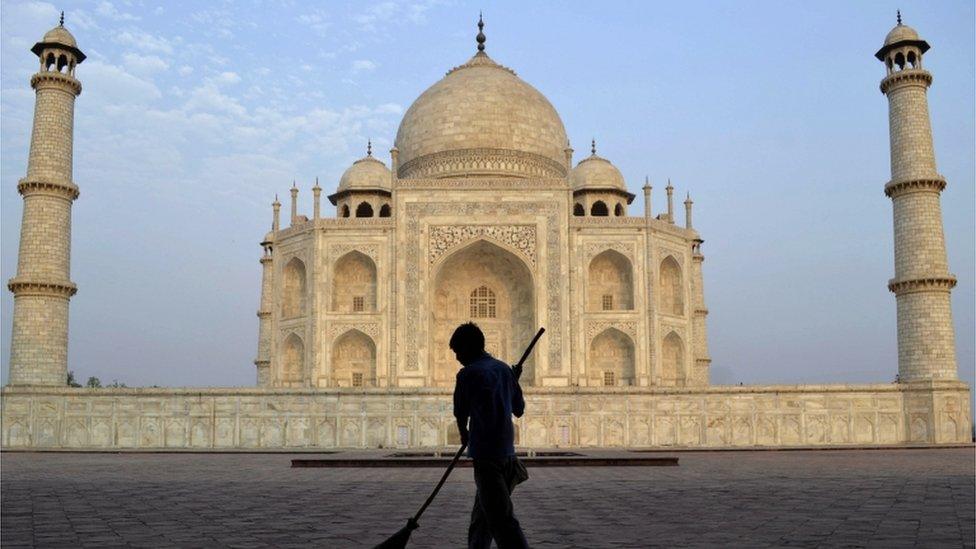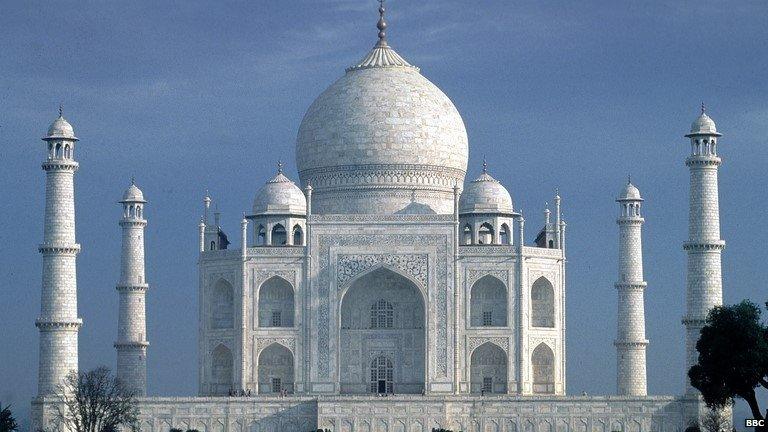Taj Mahal: India's top court orders crematorium to move
- Published

The Taj Mahal's marble has been yellowing for years
India's Supreme Court has ordered the removal of a wood-burning crematorium near the Taj Mahal to protect the famous monument to love from pollution.
The court acted after a judge warned the crematorium's smoke could damage the 17th Century marble mausoleum.
Hindus, who make up the majority of India's population, traditionally use wood in cremation pyres.
The court suggested Uttar Pradesh state authorities could move the crematorium or build an electric one instead.
The state government's advocate general agreed.
"It is a very good suggestion and I totally agree with the judge's letter," Vijay Bahadur Singh said, the Indian Express reports. "Give me a fortnight and I will come back to this court with a solution."
Crematorium staff, however, denied the pollution charges.
"Ghee, camphor, sandalwood paste and cow dung cakes used in the pyres are instead helping enrich the environment," manager Sanjay Singh told the Times of India, external.
The Taj Mahal was completed by the Emperor Shah Jahan in 1653 as a mausoleum for his third and favourite wife, Mumtaz Mahal, who died giving birth to their 14th child.
The monument's complex structure of white marble domes and minarets inlaid with semi-precious stones and carvings is considered the finest example of Mughal art in India.
In 1983, the Taj Mahal became a Unesco World Heritage site and attracts millions of visitors each year.
But it also has to contend with pollution from the busy and industrial city of Agra and a nearby oil refinery.
Over the years its gleaming white marble has been gradually turning yellow.
- Published8 June 2014

- Published13 March 2012